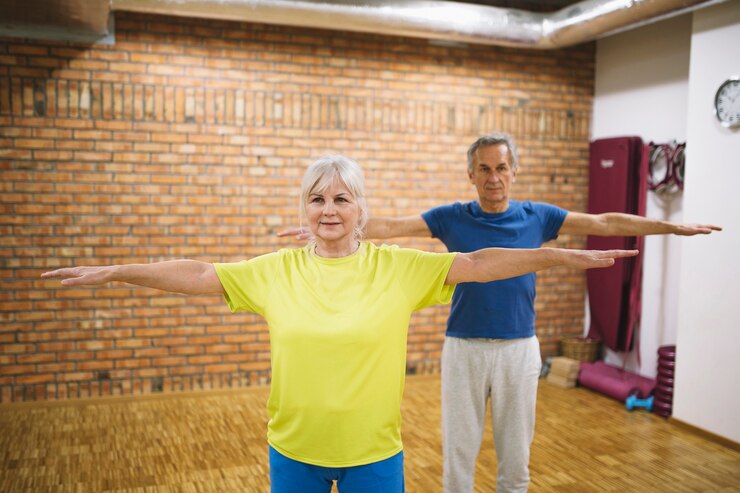Personal Training For Senior Citizens is often associated with younger individuals striving to achieve their fitness goals, but its benefits extend far beyond just the younger demographic. In recent years, there has been a significant rise in the number of seniors embracing personal training as a means to improve their overall health and well-being. In this article, we delve into the profound benefits that personal training offers to senior citizens.
Understanding Personal Training for Senior Citizens
What is Personal Training?
Personal training involves working one-on-one with a qualified fitness professional to create a tailored exercise program based on individual goals, abilities, and limitations. For seniors, personal training takes into account age-related factors such as mobility issues, joint pain, and chronic conditions.
Physical Benefits of Personal Training
Improving Strength and Flexibility
One of the primary goals of personal training for seniors is to improve strength and flexibility, which are essential for maintaining independence and reducing the risk of falls.
Enhancing Balance and Coordination
Personal trainers implement exercises that target balance and coordination, helping seniors stay steady on their feet and prevent accidents.
Managing Chronic Conditions
Personalized exercise programs can be designed to manage chronic conditions such as arthritis, osteoporosis, and cardiovascular disease, improving overall health and quality of life.
Mental Benefits of Personal Training
Boosting Cognitive Function
Regular exercise has been shown to enhance cognitive function and reduce the risk of cognitive decline in seniors.
Reducing Stress and Anxiety
Exercise releases endorphins, which are natural mood lifters, helping seniors reduce stress and anxiety levels.
Improving Overall Mood and Well-being
Engaging in regular physical activity through personal training can significantly improve seniors’ overall mood and sense of well-being, leading to a better quality of life.
Safety Considerations in Personal Training for Seniors
Importance of Medical Clearance
Before starting any exercise program, seniors should consult with their healthcare provider to ensure it is safe for them to participate in physical activity.
Adaptive Exercises for Individual Needs
Personal trainers are trained to modify exercises to accommodate seniors with mobility issues, joint pain, or other limitations.
Supervision and Guidance
Having a personal trainer provides seniors with the necessary supervision and guidance to perform exercises safely and effectively, reducing the risk of injury.
Choosing the Right Personal Trainer
Qualifications and Experience
When selecting a personal trainer, seniors should look for someone who is certified by a reputable organization and has experience working with older adults.
Compatibility and Communication
It’s essential for seniors to feel comfortable communicating with their personal trainer and for there to be a good rapport between them.
References and Testimonials
Seniors can ask for references or testimonials from past clients to ensure they are choosing a personal trainer who has a track record of success.
Overcoming Common Obstacles
Fear of Injury
Many seniors may be hesitant to start personal training due to fear of injury, but with proper guidance and supervision, the risk can be minimized.
Financial Concerns
While personal training may seem expensive, there are often affordable options available, such as group sessions or package deals.
Time Constraints
Seniors often lead busy lives, but scheduling regular exercise sessions can lead to significant health benefits and should be prioritized.
Success Stories
Real-life success stories of seniors who have benefited from personal training serve as inspiration and motivation for others to take the plunge and invest in their health and well-being.
Conclusion
In conclusion, Personal Training For Senior Citizens offers a plethora of benefits for senior citizens, both physically and mentally. By working with a qualified personal trainer, seniors can improve their strength, flexibility, balance, and overall quality of life. It’s never too late to invest in one’s health, and personal training provides seniors with the guidance and support they need to lead active and fulfilling lives.
FAQs
- What age is considered senior for personal training?
- Senior age varies but typically starts around 65 years old for personal training purposes.
- How often should seniors engage in personal training sessions?
- Seniors should aim for at least two to three sessions per week to experience significant benefits.
- Can personal training help with arthritis?
- Yes, personal training can be tailored to manage arthritis symptoms and improve joint function.
- Is personal training expensive for seniors?
- Personal training costs vary but there are often affordable options available, including group sessions and discounts for seniors.
- Are there any risks associated with personal training for seniors?
- With proper supervision and guidance, the risks associated with personal training for seniors are minimal, and the benefits far outweigh any potential drawbacks.



